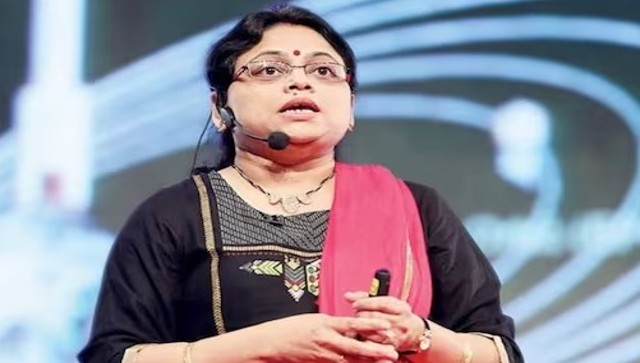“India is on the Moon!” It was a dream come true for Indians after the Indian Space Research Organisation’s (ISRO) Chandrayaan-3 scripted history by becoming the first ever to soft land on the south pole of the lunar surface. As we celebrate this precious moment, a lesser-known fact is that a woman is behind it all. Yes. Dr Ritu Karidhal Srivastava, often referred to as the “Rocket Woman of India,” played a significant role in the team that launched India’s historic voyage to the moon. Also read: How Chandrayaan-3 will leave an imprint of the national emblem on the Moon Meet Dr Ritu Karidhal Srivastava Dr Ritu Karidhal Srivastava is a senior scientist at ISRO. Born and brought up in Lucknow, Dr Karidhal completed her post-graduation from Lucknow University’s physics department. She got enrolled for a PhD in the same department. Only six months later, in 1997, the ISRO chose the 48-year-old, who joined as a scientist. She graduated from the Indian Institute of Science (IISc) with a Master’s in Aerospace Engineering. Her PhD guide, Prof Manisha Gupta, said Karidhal’s topic was materials. “She was a bright student. She also taught in the department as a part-time teacher like other PhD scholars. Indeed, it’s a matter of pride for all of us,” Gupta told News18.
Dr. Karidhal is the recipient of numerous honours, including the Women Achievers in Aerospace Award from the Society of Indian Aerospace Technologies & Industries (SIATI) in 2017 and the ISRO Young Scientist Award from former president APJ Abdul Kalam. According to her interview with iDiva, the 48-year-old has always been intrigued by space and has a desire to achieve something unique. She used to collect newspaper clippings of NASA and the ISRO. More than 20 of her publications have been published in both national and international journals. She serves as an inspiration to many individuals all around the world and is a role model for women in STEM fields. Also read: Chandrayaan-3 and Dark Side of the Moon: Why race to the south pole is hotting up Her role in the key space mission Dr Karidhal has been an integral part of numerous space missions in Indian history. She is one of the only women in charge of Chandrayaan-3, despite the fact that 54 female scientists and engineers, a record number, contributed to the backend work. She has been appointed Mission Director of the lunar odyssey of India. She was also in charge of designing and putting the Mangalyaan/MOM, the craft’s future autonomous system, into operation as the Deputy Operations Director of India’s Mars Mission. She served as the mission director for the Chandrayaan-2 in 2019. Also read: Chandrayaan-3 lands on Moon: A much-needed guide to space lingo All about Chandrayaan-3 Chandrayaan-3 refers to India’s third moon mission. It’s the name of the spacecraft that the Launch Vehicle Mark-III (LVM-3) rocket used to send off toward the Moon. The more than 3,000 km spacecraft was launched by the largest rocket in the nation into an elliptical orbit with an Earth parking distance of 170 X 36,500 km. The propulsion and the Lander module were the two components which made up the craft.
Chandrayaan-3 Mission:
— ISRO (@isro) August 23, 2023
'India🇮🇳,
I reached my destination
and you too!'
: Chandrayaan-3
Chandrayaan-3 has successfully
soft-landed on the moon 🌖!.
Congratulations, India🇮🇳!#Chandrayaan_3#Ch3
The lengthy lunar voyage started on 14 July. India is now a major player in space thanks to the spacecraft’s successful soft landing on the Moon on Wednesday, 23 August. With this, India has become the fourth country to successfully land a robotic probe on the sole natural satellite of the Earth and the first to soft land on the lunar surface’s south pole. ISRO chief S Somanath described up this glorious moment by saying, “India is on the Moon.” Prime Minister Narendra Modi praised the ISRO team for their hard work and said, This moment is precious and unprecedented. This moment is the jaighosh of new India. This moment is the strength of 1.4 billion heartbeats. The success of Amrit Varsha in this phase of Amrit Kaal.” Also read: Chandrayaan-3: What will the lander and rover do after landing on Moon? The Moon’s South Pole is “mysterious” The south pole of the Moon is “full of mystery, science, and intrigue,” according to the American space agency NASA. With several craters and deep trenches, the area has a challenging topography. Temperatures in some parts of the region have fallen to as low as minus 230 degrees Celsius as a result of billions of years without sunlight. The existence of water ice in some of the shadowed craters has been verified by numerous sources. This has rekindled enthusiasm in exploring uncharted territory in several nations. With inputs from agencies


)

)
)
)
)
)
)
)
)



